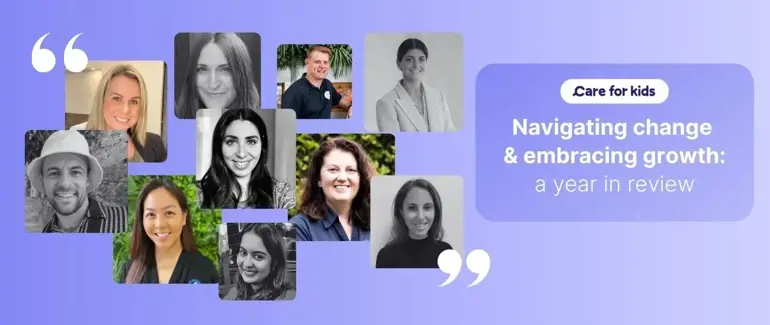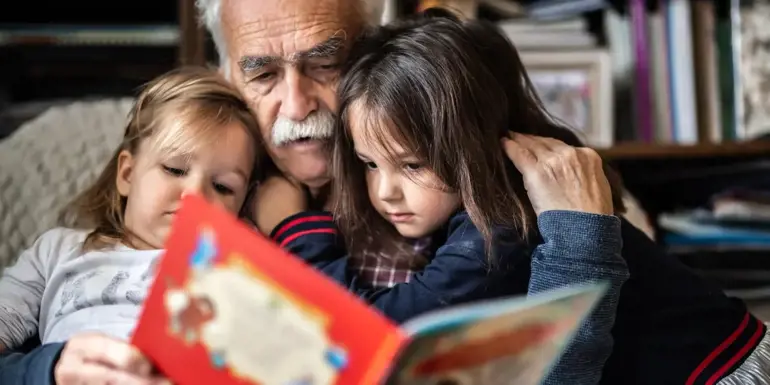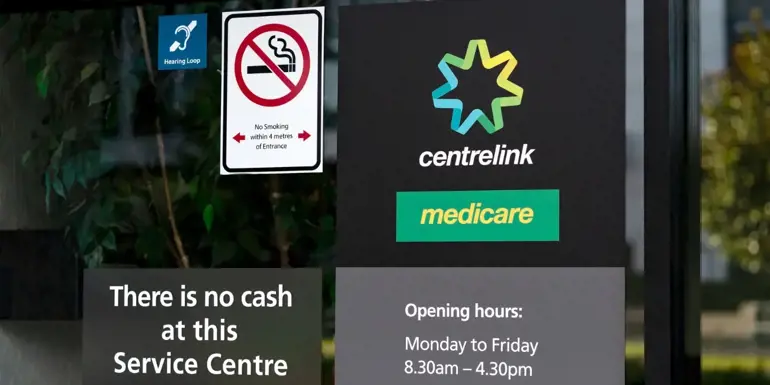Child care affordability is an issue close to all our hearts (and wallets), and although we know the value of quality early childhood education and care for little ones, the actual cost can soon add up.
The more care you need, and the more children you have, the greater your fees will be, and although the government often helps with child care costs, many Australian families are spending a sizeable part of their income on child care, or else curbing their work to care for kids themselves.
In recognition of this, the government has boosted its child care investment by $1.7 billion in last night’s Budget to reduce out of pocket fees for some families – and increase workforce participation.
It's also spending $1.6 billion to guarantee Commonwealth funding for preschool for four years. A new funding agreement will be negotiated with the States and Territories to support access to at least 15 hours of a quality preschool program each week for a child in the year before school.
There's also funding to establish a new Early Childhood Program that focused on disability. This program will offer information, workshops and supported playgroups for children aged eight years and under with disability or developmental needs.
You can read the Budget overview here, and today, we’re focusing on the $1.7 billion investment in child care affordability to see if, and how, your family will benefit.
How is the government changing the Child Care Subsidy system?
Although we might dream about free child care for all, the government says it’s making changes that, ‘Deliberately target low and middle income earners, with around half the families set to benefit having a household income under $130,000.’
Families with two or more young children in child care are the focus, and there’s good news for higher income earners, too, because the government is:
- Increasing the Child Care Subsidy (CCS) for families who earn less than $353,680 (in 2020-2021) and have more than one child under the age of six in child care, and
- Removing the annual cap, so that families earning more than $189,390 will no longer have an annual CSS cap of $10,560 per child per financial year.
The government recognises that child care costs really add up when you have two or more young children in care, so instead of applying the same CCS subsidy rate to all the children in a family (anywhere between zero and 85 per cent), they’re increasing the CCS subsidy by 30 per cent (capped at 95 per cent) for a family’s second and subsequent children, as long as they’re under six and in child care.
This means that if a family’s first child is eligible for a 65 per cent subsidy, and their sibling enters care at the same time, the second child will attract a 95 per cent subsidy.
This change will help young families with the cost of approved centre-based care and family day care, but it’s important to know that the CCS increase won’t apply to In Home Care sessions, because IHC is subsidised per family, not per child.
It's also important to know that the changes won't come into effect until July 2022, and legislation needs to be passed to lock them in.
That said, the Treasurer, Josh Frydenberg, hopes the policy can introduced earlier than next July, if technologically possible.
What do the changes mean in dollar terms?
The government says, ‘Half of Australian families will receive a 95 per cent subsidy for their second and subsequent children,’ and the increase in CCS will benefit around 250,000 families, saving them an average of $2,260 per year.
Different families have different finances, but as a guide, the government explains that a family with two children in child care* four days a week will enjoy savings whether they’re on a low, middle or high income:
| Family income | Current out-of-pocket child care cost per week | Current subsidy | New second child subsidy | Future out-of-pocket child care cost per week | Total better off per week |
| $40,000 | $124.80 | 85% | 95% | $83.20 | $41.60 |
| $80,000 | $149.18 | 82% | 95% | $95.39 | $53.79 |
| $110,000 | $232.38 | 72% | 95% | $136.99 | $95.39 |
| $140,000 | $315.58 | 62% | 92% | $190.78 | $124.80 |
| $180,000 | $416.00 | 50% | 80% | $291.20 | $124.80 |
*Based on an average hourly centre-based day care rate of $10.40 per hour for a 10-hour session.
By way of comparison, a family with three young children in care, earning $80,000 per annum, will get a subsidy of 95 per cent (up from 82 per cent) for their second and third child, and will be $108 a week better off for four days of care.
Removing the annual cap will also save money for some families.
At present, higher income earners must pay full fees when they reach the $10,560 cap towards the end of the financial year, but removing this cap frees up families to work more, earn more, and pay less for their child care.
The government says around 18,000 families will benefit from the removal of the annual CCS cap.
What else does the government hope to achieve by investing more money in child care?
The Treasurer, Josh Frydenberg explains that this investment in child care, ‘Simultaneously makes child care more affordable, increases workforce participation and boosts the Australian economy by up to $1.5 billion per year.’
The focus on workforce participation is important because, for many families, it simply doesn’t make financial sense for the second income earner to work more than three or four days per week.
The ABC reports that, ‘Caps on the child care rebate, loss of family benefits and the tax system mean that some second earners would be working for nothing on a fifth day.’ And according to economists, this has led to a high rate of part-time work for women and a limit on workforce participation.
In response, the government’s child care measures are meant to lower the ‘structural disincentive to take on an additional day or two of work for many families.’
From next July, it may make more sense (and dollars) for a parent to work a fifth day; and the Minister for Women, Marise Payne, says ‘Increasing the Child Care Subsidy is an important measure that will help reduce the disincentives for women to participate in the workforce to the full extent they choose,’ enabling them to:
- Return to work sooner
- Progress their careers and pay grade, and
- Contribute to the economy.
Removing the annual cap encourages parents to work more, not less, and the government says its child care investment, 'Will add up to 300,000 hours of work per week which would allow the equivalent of around 40,000 individuals to work an extra day per week and boost the level of GDP [gross domestic product] by up to $1.5 billion per year.’
What criticism has been levelled at the child care changes?
Although around 268,000 Australian families will benefit from the changes, Kate Noble and Peter Hurley from Victoria University question whether the government’s child care policy package will do much to improve the affordability of child care for many families, including those on low and middle incomes.
They say, ‘Our analysis suggests 41 per cent of families with one child aged under five years will continue to spend more than seven per cent of their disposable income on child care.’
This last figure is note-worthy because an ‘affordability threshold’ set by the US government characterises child care as ‘unaffordable’ if low to middle income families are spending more than seven per cent of their income on it.
In Australia, there are almost one million families using child care, so although the upcoming changes are very welcome for larger and higher income families, here’s hoping that child care can be made more affordable for one and all.
References
Department of Education, Skills and Employment
Ministers’ Media Centre
The Sector



































